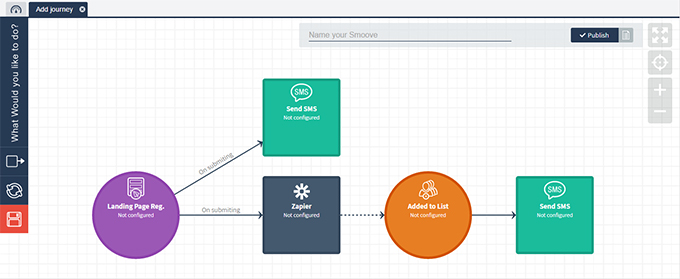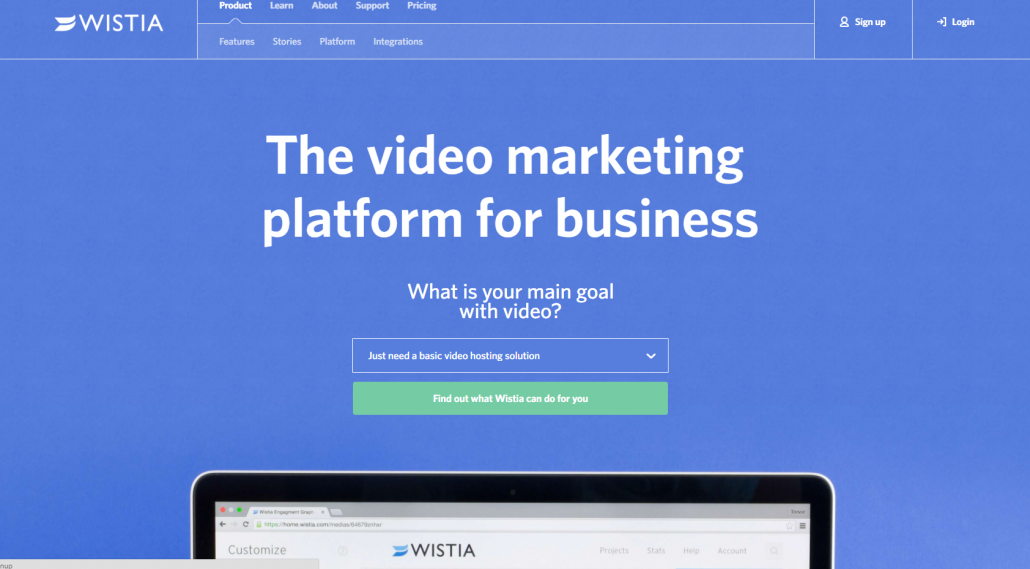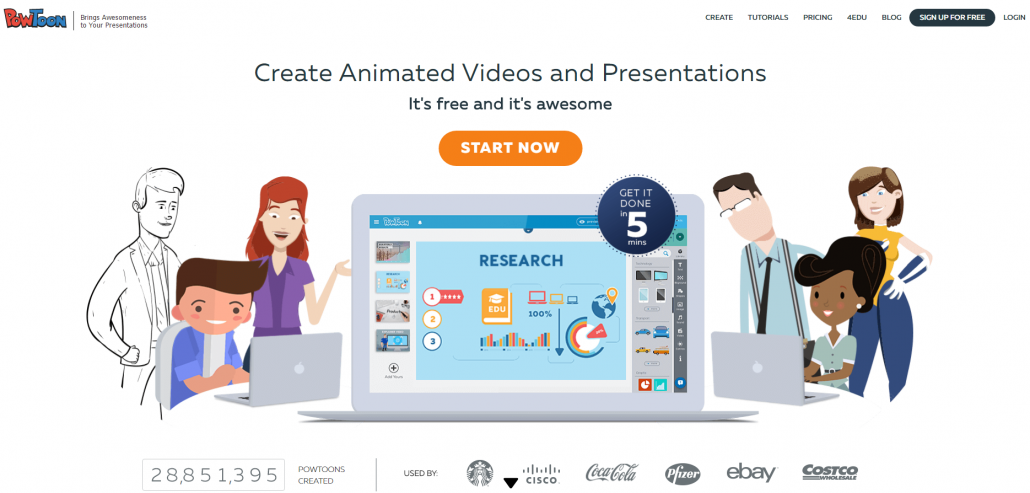How to utilize video in your marketing strategy?
After the video “killed” the radio stars this medium continued to slay and be the number one marketing tool, especially when it comes to Marketing Automation.
Yet like the old saying goes, ‘lets talk numbers” shall we?
- Video mailing gets 2-3 times more clicks than regular mailing.
- Landing pages with videos convert 80% more than others.
- The cost of lead that converted after watching a video was 20% lower than regular ones.
- According to Cisco by 2018 80% of the web traffic will be video.
Video landing page example – Sia
So far so good, yet despite this amazing data many marketers are still apprehensive about using video as a leading content. The cost of producing a video is perceived to be high and the required technological threshold deters many from using it.
Moreover, when using video with marketing automation, which comes first?
How does one support the other?
In what way do we define the two of them together?
You are probably familiar with these questions.
As you may already know, Marketing Automation is the next big thing in the world of digital marketing and should you choose to take it one step further, the following guide will do the trick. The right combination of video with an automatic tool like smoove will take you one step closer to fulfilling the ultimate goal of any automatic system: sending the right video to the right person at the right time.
Six reasons to ❤ video marketing:
- It’s intriguing and enticing: when it comes to video vs. text – the video wins big. In general, it takes an average of 8 seconds to impress a visitor before she decides whether to stick around or move elsewhere. Video, as content, usually gets visitors to stick around longer than 8 seconds. 65% of viewers will watch 3/4 of a video. The highest rate in comparison to any other type of content. Try adding a video to your subject line and see the difference.
- Higher conversion rate: in comparison to any other content, video increases conversion by 85%.
- Video promotes your Google SEO efforts: including a video on your homepage may increase your chances to appear on Google’s first results page by 53%.
- Video promotes higher customer involvement: Video is ten times more likely to be shared through social networks.
- Better consumer behavior evidence: watching videos can attest better than any other type of content about the customer’s purchase intentions. As opposed to a Pdf guide, for example, that can only indicate whether it was downloaded or not, video makes it easier to monitor the customer’s behavior.
- Cost benefit: video production is not as expensive as it once was. Today, thanks to technological advancements, there are many available tools that enable the production and creation of videos of the highest quality.
The Smoove Video had already been watched more than 160,00 times
Mobile also contributed a great deal to the promotion of video usage. Almost any mobile device enables the shooting of a high quality video. Video platforms such as Youtube and Vimeo, as well as Facebook, allow for easy video sharing, and provide an easy to use set of tools to those who wish to promote their videos.
Another example of a facebook page that utilizes videos in order to promote its messages.
https://www.facebook.com/StandWithUs/?hc_ref=NEWSFEED&fref=nf
Why do Video and Marketing Automation constitute a winning duo?
The greatest advantage of Marketing Automation is the ability to send the right message to the right person at the right time. When a customer downloads a guide, reads a blog post, or opens a mailing he actually illustrates his interest level and what content appeals to him the most.
An automatic & sophisticated tool like smoove will allow you to create an entire route, from beginning to end, through which the customer will encounter content that matches his current position as a consumer as per the content he choses to consume. The nature of the content will derive from the initial process objectives (customer nurturing, lead generation or even collection process).

Of all the indicators that we mentioned above, the video as an indicator gives the best reflection concerning the customer’s position within the marketing funnel.
If customer X watched the entire video, unlike customer Y who only watched half of it, customer X will be in a better position to receive a new mailing that features another video with a new viewpoint, or an offer to take an online course, for example.
Possible Triggers:
Watching the video for the first time: in order to watch the video the customer must enter her email address. That is an excellent trigger that can launch the customer journey down the funnel.
Watching the entire video: this is an excellent opportunity to tell the automatic system to automatically send an email once the customer finished watching the video, with an invite to watch another one, or even with a post entry about the video. Any mailing that is relevant to the viewed content will facilitate the customer’s journey down the funnel towards the sought after purchase/action.
Viewing times: once the customer viewed a certain number of videos his contact information will be submitted to the sales team.
Segmentation: The type of content and the way it was used can assist in creating a percise segmentation of your customers.
For those of you who want to work like a pro here are two tools that you should probably know:
Wistia: Unlike youtube, which is a video platform for any content maker, Wistia only serves companies via marketing, support and sales videos. Using the platform allows companies to drive more traffic to their website, increase conversions or increase digital engagement.

The viewership data that the system provides is more detailed than Youtube, and can output information such as the way audience viewed the videos, display a video’s accumulative performance with an engagement and commitment index, as well as provide specific individual data concerning each viewer.
Another advantage is the system’s integration with other mailing systems’ providers that allows leads to be submitted straight to the mailing list.
Powtoon:
This startup developed a cool user friendly tool that enables the creation of animated instructional and promotional videos about your product without any prior animation knowledge. Such animation includes text, music, and presentations at a high level. While this tool is not free, it does offer a free 48 hours trial period.

Another more familiar method to measure how much content was consumed by your customer is the embedding of a pixel code from Facebook or Google on your website. Thanks to this code you can follow the actions of a visitor on your website in order to customize the content to her.
How to include Video in your marketing strategy?
Every marketing strategy begins with the setting of the objectives of the marketing efforts. The following three objectives are the most common when it comes to automation, specifically when video is being used in order to maximize the strategy.
- Lead Generation: Just like any other content that was designed to gather leads (landing page, popup, registration and so forth), a video is a great opportunity to add a call-for-action button before, during and after.
○ Before: in order to be able to watch the video the visitor must enter his email address.
○ During: you probably came across a video where a call to watch similar videos or visit a website appeared in its middle. As long as such message does not hinder the viewing experience this is an excellent opportunity.
○ After: if your customer watched the whole video and did not encounter a call-for-action – that is a missed lead opportunity. Some videos end with a call to “like us on facebook” and while they may not have missed the opportunity, a call for action should be more targeted. For example: “for more fun videos enter your email address”. Such message has better chances at maintaining your communication with your customer.
- Lead Nurturing: your customers are not always at the same place when it comes to your marketing funnel, and each of them requires a different content in order to move them one step closer. For example a customer, who watched a series of instructional videos is more ready to make a purchase than a customer, who only watched one. Another good example: a customer, who only now downloaded a manual, is not necessarily ready to try the demo version of your product.
Thus, in order to make a more efficient marketing automation a customer’s position within your marketing funnel needs to be mapped. In general, the funnel can be divided into three different positions:
- Problem awareness: The customer understands that he has an existing problem that he wishes to solve, and he is looking for professional information on the web. What video to send? The suggested content for this position is an instructional videos.
- The contemplating stage: the customer examines the various solutions available to him. What video to send? A video, which identifies the brand and its product with an emphasis on its advantages, fits best at this stage.
- The decision stage: The customer made a short list of his preferred solutions (usually three) and is looking for a trial product in order to reach his final decision (such as a demo, trial period or case study).
What video to send? A recommendation video that features satisfied customers can be an excellent incentive at this stage.
- Lead Scoring: lead scoring is designed to provide the right message to the right person at the right time via scoring the customer’s readiness according to previously set parameters through the scoring of each action that was taken by the customer. Each video receives an individual score according to its marketing value to the advertising company.
Characteristics that indicate a higher readiness level, hence greater chances for conversion, receive higher scores than others.
Therefore, a customer that watched only two videos but they were of a higher stage (the decision stage) will receive a more advanced message than a customer, who watched four videos, but of a lower stage (the problem stage awareness).
There are three video components that can indicate the customer’s behavior hence her score:
- The video subject matter: what interests your customers? For example, a college that sells different courses will automatically send the appropriate videos to a potential student, who showed interest in Mass Media.
- Video consumption percentage: out of all available videos, how many did the customer watch? A customer that watches the entire video is very different than a customer, who only watched the beginning of such video.
- The total sum of videos: mapping your videos according to such categories as: instructional, product, interviews etc. with a total sum of all components.
The Bottom Line:
If you reached this part then you already know the importance of automation in Marketing, why video is so significant in automatic processes, the way your marketing objectives should affect the type of video sent to your customers, and how the video can be integrated with each of them.
When used correctly, video is a tool that gives you, the marketer, the highest chances to promote your website, convert, and increase the engagement of customers.
The history of views, video performance, and device used to watch the video (mobile, laptop, desktop etc), will provide a useful data and maximize future campaign. This will allow for a more personalized and relevant content to the customer. But most importantly, a higher cost-benefit.
Smoove has recently launched an automation tool for the automatic planning, management, and administration of marketing processes. Creating a process that encompasses video, will upgrade your campaign’s performance, and allow you to get a more precise indication and knowledge about your potential customer




Leave a Reply
Want to join the discussion?Feel free to contribute!